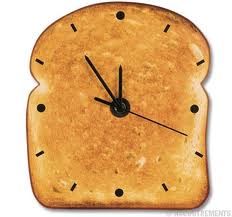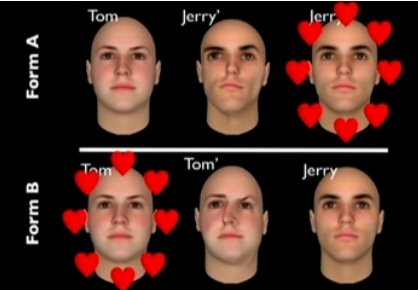Tagged: Design
Creamy Corn or Two-Dollar Cookies? The Rise of Behavioral Economics
Imagine that you’ve just spent the whole morning working non-stop. You’ve been hushing your stomach  grumblings for the past hour and you cannot concentrate on anything but your hunger and that devastatingly slow-ticking clock.
grumblings for the past hour and you cannot concentrate on anything but your hunger and that devastatingly slow-ticking clock.
Another hour passes and that long awaited lunchtime break has finally come around. All you know is that you need food, and you need it now, so you decide to stay in your building and rush to the cafeteria. You enter, put your things down, and begin the search.
Which foods will you choose? Or, which foods will choose you?
Brian Wansink and David R. Just are trying to answer that question, specifically pertaining to children. In addition to being faculty at the Dyson School of Applied Economics and Management at Cornell, Wansink and Just are co-directors of the newly launched Cornell Center for Behavioral Economics in Child Nutrition Programs. With a $1 million grant from the U.S. Department of Agriculture, the center will provide valuable research on subtle behavioral influences, helping efforts to “nudge” children into making healthier eating choices.
Wansink says, “We’re taking some of the best researchers in the nation and pairing them with schools to figure out new, cool ways to get people to eat healthier.” For example, “by strategically placing healthy food at both the beginning and end of school lunch lines, more children choose them.”
Naming foods more descriptively, charging extra for dessert, and placing healthy foods like fruits into baskets  also increased choice of healthier foods. Other interesting techniques Wansink and Just suggest can be seen in Joe McKendry’s illustration in The New York Times.
also increased choice of healthier foods. Other interesting techniques Wansink and Just suggest can be seen in Joe McKendry’s illustration in The New York Times.
The benefits of this research seem clear enough. Children who are encouraged to eat healthier each day at school will likely develop long-lasting, healthy habits. These habits can then help reduce their risk of obesity and associated diseases.
So what about the drawbacks? Are there any? Is changing the way options are presented a violation of free will or choice? Just says he and his colleagues are “not eliminating choice… [they’re] pushing things where [they] can and not trying to do the impossible.”
What do you think? Are there degrees of choice? Are Just and Wansink simply lowering the degree children have in selecting foods to eat? Either way, isn’t it sort of disturbing that such subtle changes in placement, naming, or presentation can influence your decisions, whether it be which foods you eat or which habits you’ll develop?
The research in the rising field of behavioral economics certainly leads one to ask these questions. Author of Predictably Irrational, Dan Ariely talks on TED about how irrational people are in their decisions. Particularly, he discusses how easily external forces can influence choices. For example, depending on how a question is worded or presented, people respond differently even though the two forms of the question are essentially the same.
One interesting study he conducted involves choosing the image of the most attractive man out of a total of three  men. Two of these images are of the same man, Jerry, but one is edited to make him less attractive by distorting the facial features. The other image is of another man, Tom. Most participants chose the more attractive version of Jerry. However, if instead there are two images of Tom, one less attractive, and one image of Jerry, most people choose the more attractive version of Tom. Even though the original images of Tom and Jerry remained in both sets, they did not receive the same response because of an external force.
men. Two of these images are of the same man, Jerry, but one is edited to make him less attractive by distorting the facial features. The other image is of another man, Tom. Most participants chose the more attractive version of Jerry. However, if instead there are two images of Tom, one less attractive, and one image of Jerry, most people choose the more attractive version of Tom. Even though the original images of Tom and Jerry remained in both sets, they did not receive the same response because of an external force.
Through these examples, Ariely demonstrates how much influence the designer, whether of surveys, forms, or tests, has on the decisions of the people filling them out. Do the people still have a choice to choose Jerry when unattractive Tom highlights regular Tom so well? If yes, then why do most people choose Tom? Are there degrees of choice involved? How about degrees of resistance to external forces? Do they change at all when the  designers have different intentions? For example, compare a store selling 2 shirts for the price of one and a cafeteria offering “creamy corn” and “two-dollar cookies.” Both places are trying to take advantage of subtle differences, but the cafeteria seems to have kinder intentions.
designers have different intentions? For example, compare a store selling 2 shirts for the price of one and a cafeteria offering “creamy corn” and “two-dollar cookies.” Both places are trying to take advantage of subtle differences, but the cafeteria seems to have kinder intentions.
What can we make of all this? Can we change how irrational, as Ariely might say, we are? If so, should we advocate the advances of behavioral economics in their kinder intentions, despite the seeming drawbacks?
Sources/Additional Readings:
Stealth Health for Kids – Newsweek
Lunch Line Redesign – The New York Times
New center, with $1 million grant, aims to make school lunchrooms smarter – ChronicleOnline, Cornell University
Daniel Kahneman: The Riddle of Experience vs. Memory – TED Talks
Dan Ariely: On Our Buggy Moral Code – TED Talks